Citation: Sharon M. Leon. “Layers and Links: Writing Public History in a Digital Environment.†in The Oxford Handbook of Public History, edited by Paula Hamilton and James B. Gardner (Forthcoming from Oxford University Press, January 2016).
]]> RRCHNMâ€
RRCHNMâ€ s foray into community transcription with the Papers of the War Department, 1784-1800 and the development of Scripto offers some significant lessons for cultural heritage institutions and professionals who want to engage with their constituents in meaningful ways. Primarily, we gained a dedicated and engaged audience for PWD, and a tremendous insight into their motivations. Equally important, the development process for the generalized tool, and its role in the larger ecosystem of open-source software that enables widespread user participation in cultural heritage projects, points to viable directions for the development of subsequent tools. Together this case study of PWD and the story of the creation of Scripto suggest that a wide range of cultural heritage organizations can launch and sustain lightweight transcription projects that encourage increased engagement with core audiences.
s foray into community transcription with the Papers of the War Department, 1784-1800 and the development of Scripto offers some significant lessons for cultural heritage institutions and professionals who want to engage with their constituents in meaningful ways. Primarily, we gained a dedicated and engaged audience for PWD, and a tremendous insight into their motivations. Equally important, the development process for the generalized tool, and its role in the larger ecosystem of open-source software that enables widespread user participation in cultural heritage projects, points to viable directions for the development of subsequent tools. Together this case study of PWD and the story of the creation of Scripto suggest that a wide range of cultural heritage organizations can launch and sustain lightweight transcription projects that encourage increased engagement with core audiences.
Citation: Sharon M. Leon, “Build, Iterate, and Generalize: Community Transcription of the Papers of the War Department and the Development of Scripto,†in Crowdsourcing our Cultural Heritage, edited by Mia Ridge (Ashgate, 2014).
Download the PDF.
]]>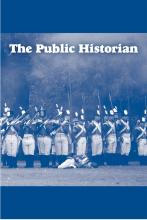 The digital revolution has transformed research, exhibition, writing, review, participatory public engagement, and every other aspect of history practice. To consider the influence of these changes on The Public Historian, the journal has solicited the perspectives of six scholars with expertise on digital history to reflect on what the internet age affords TPH as a scholarly journal for the field of public history.
The digital revolution has transformed research, exhibition, writing, review, participatory public engagement, and every other aspect of history practice. To consider the influence of these changes on The Public Historian, the journal has solicited the perspectives of six scholars with expertise on digital history to reflect on what the internet age affords TPH as a scholarly journal for the field of public history.
Citation: Sharon M. Leon, et al., “Imaging the Digital Future of The Public Historian,†The Public Historian 35:1 (February 2013) 8-27.
Download the PDF.
]]>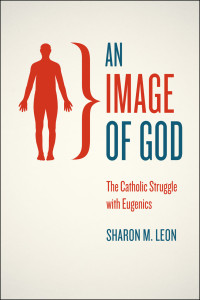 In the first half of the twentieth century, supporters of the eugenics movement offered an image of a racially transformed America by curtailing the reproduction of “unfit†members of society. Through institutionalization, compulsory sterilization, the restriction of immigration and marriages, and other methods, eugenicists promised to improve the population—a policy agenda that was embraced by many leading intellectuals and public figures. But Catholic activists and thinkers across the United States opposed many of these measures, asserting that “every man, even a lunatic, is an image of God, not a mere animal.â€
In the first half of the twentieth century, supporters of the eugenics movement offered an image of a racially transformed America by curtailing the reproduction of “unfit†members of society. Through institutionalization, compulsory sterilization, the restriction of immigration and marriages, and other methods, eugenicists promised to improve the population—a policy agenda that was embraced by many leading intellectuals and public figures. But Catholic activists and thinkers across the United States opposed many of these measures, asserting that “every man, even a lunatic, is an image of God, not a mere animal.â€
In An Image of God, I examine the efforts of American Catholics to thwart eugenic policies, illuminating the ways in which Catholic thought transformed the American conversation about individual rights, the role of the state, and the intersections of race, community, and family. Through an examination of the broader questions raised in this debate, Leon casts new light on major issues that remain central in American political life today: the institution of marriage, the role of government, and the separation of church and state. This is essential reading in the history of religion, science, politics, and human rights.
Reviews:
- Dowbiggin, Ian. “Sharon M. Leon. An Image of God: The Catholic Struggle with Eugenics.†Isis 105, no. 2 (June 2014): 417–18. http://www.jstor.org/stable/10.1086/677985.
- Lombardo, Paul A. “An Image of God: The Catholic Struggle with Eugenics by Sharon M. Leon (review).†The Catholic Historical Review 100, no. 1 (Winter 2014): 179–80. http://muse.jhu.edu/journals/cat/summary/v100/100.1.lombardo.html.
- Oâ€
 Leary, Don. “Sharon M. Leon. An Image of God: The Catholic Struggle with Eugenics.†The American Historical Review 120, no. 1 (February 2015): 272–73. http://ahr.oxfordjournals.org/content/120/1/272.full.
Leary, Don. “Sharon M. Leon. An Image of God: The Catholic Struggle with Eugenics.†The American Historical Review 120, no. 1 (February 2015): 272–73. http://ahr.oxfordjournals.org/content/120/1/272.full.
- Shapiro, Adam R. “An Image of God: The Catholic Struggle with Eugenics.†Journal of the History of Medicine and Allied Sciences 70, no. 2 (April 2015): 329-31. http://jhmas.oxfordjournals.org/content/70/2/329.full.
- Walsh, Sarah. “Sharon M. Leon, An Image of God: The Catholic Struggle with Eugenics.†The British Journal for the History of Science 48, no. 1 (March 2015): 185–87. http://dx.doi.org/10.1017/S0007087414001022.
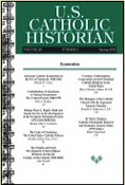 In 1948, the California Supreme Court declared the state’s anti-miscegenation statute unconstitutional. Â Twenty years before the U.S. Supreme Court came to the same conclusion in Loving v. Virginia, Daniel Marshall argued that his clients deserved the right to marry in California in part based on the fact that their church had no objections. Â Andrea Perez and Sylvester Davis were Catholics, and their attorney was a leading member of the Los Angeles chapter of the Catholic Interracial Council. Â The story of their efforts to overturn the anti-miscegenation statute sheds light on Catholic thinking about religious and racial differences with respect to marriage and the ways that that thinking interfaces with contemporary attitudes about race in a pluralistic American culture.
In 1948, the California Supreme Court declared the state’s anti-miscegenation statute unconstitutional. Â Twenty years before the U.S. Supreme Court came to the same conclusion in Loving v. Virginia, Daniel Marshall argued that his clients deserved the right to marry in California in part based on the fact that their church had no objections. Â Andrea Perez and Sylvester Davis were Catholics, and their attorney was a leading member of the Los Angeles chapter of the Catholic Interracial Council. Â The story of their efforts to overturn the anti-miscegenation statute sheds light on Catholic thinking about religious and racial differences with respect to marriage and the ways that that thinking interfaces with contemporary attitudes about race in a pluralistic American culture.
Citation: Sharon M. Leon, “Tensions Not Unlike that Produced by a Mixed Marriage: Daniel Marshall and Catholic Challenges to Anti-Misecegenation Statutes,” U.S. Catholic Historian 26, no. 4 (2008) 27-44.
Download: PDF
]]>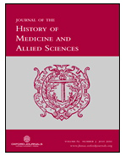 This article examines the involvement of U.S. Catholics in the American Eugenics Society during the 1920’s. While Catholics were often opponents of eugenics, John A. Ryan and John Montgomery Cooper, both Catholic priests and intellectuals, were prominent in the debate within the Committee on Cooperation with Clergymen of the American Eugenics Society. Ryan and Cooper repeatedly examined the scientific bases for eugenicists’ claims and sought to shift the movement away from its racist and classist elements. Soon after Pope Pius XI’s encyclical Casti Connubii formalized Catholic opposition to eugenics and other efforts to control reproduction, such as birth control, Ryan and Cooper finally broke with the AES.
This article examines the involvement of U.S. Catholics in the American Eugenics Society during the 1920’s. While Catholics were often opponents of eugenics, John A. Ryan and John Montgomery Cooper, both Catholic priests and intellectuals, were prominent in the debate within the Committee on Cooperation with Clergymen of the American Eugenics Society. Ryan and Cooper repeatedly examined the scientific bases for eugenicists’ claims and sought to shift the movement away from its racist and classist elements. Soon after Pope Pius XI’s encyclical Casti Connubii formalized Catholic opposition to eugenics and other efforts to control reproduction, such as birth control, Ryan and Cooper finally broke with the AES.
Citation: Sharon M. Leon, “’Hopelessly Entangled in Nordic Pre-Suppositions’: Catholic Participation in the American Eugenics Society in the 1920s,†Journal of the History of Medicine & Allied Sciences 59, no. 1 (2004): 3-49.
Awards: 2005 Stanley W. Jackson Prize for best JHMAS article (2002-2005)
Download: PDF
]]>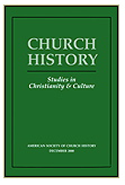 This article reviews the developing strategies of Catholic opposition to  state laws for compulsory sterilization of so-called ‘feeble-minded’ residents of state institutions during the 1920s. In 1927 the Supreme Court, in its landmark decision Buck v. Bell, affirmed the constitutionality of such laws. This article traces the work of Catholic moral theologians, such as John A. Ryan, and representatives of various lay organizations in opposing such laws and educating Catholic laity on the natural law issues in the debate. In 1930 the National Catholic Welfare Conference published four pamphlets in a series entitled ‘Problems of Mental Deficiency’ that provided a full compliment of medical, legal, and moral objections to the laws.  On 31 December 1930 Pope Pius XI in his encyclical ‘Casti Connubii’ provided an authoritative pronouncement on eugenics and sterilization that reaffirmed Catholic opposition to eugenics policy initiatives.
This article reviews the developing strategies of Catholic opposition to  state laws for compulsory sterilization of so-called ‘feeble-minded’ residents of state institutions during the 1920s. In 1927 the Supreme Court, in its landmark decision Buck v. Bell, affirmed the constitutionality of such laws. This article traces the work of Catholic moral theologians, such as John A. Ryan, and representatives of various lay organizations in opposing such laws and educating Catholic laity on the natural law issues in the debate. In 1930 the National Catholic Welfare Conference published four pamphlets in a series entitled ‘Problems of Mental Deficiency’ that provided a full compliment of medical, legal, and moral objections to the laws.  On 31 December 1930 Pope Pius XI in his encyclical ‘Casti Connubii’ provided an authoritative pronouncement on eugenics and sterilization that reaffirmed Catholic opposition to eugenics policy initiatives.
Citation: Sharon M. Leon, “’A Human Being, and Not  a Mere Social Factor’: Catholic Strategies for Dealing with Sterilization Statutes in the 1920s,†Church History 73, no. 2 (2004): 383-411.
]]>